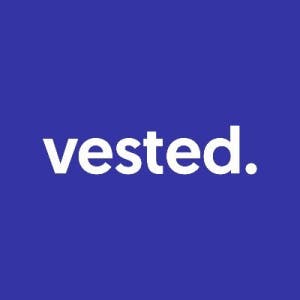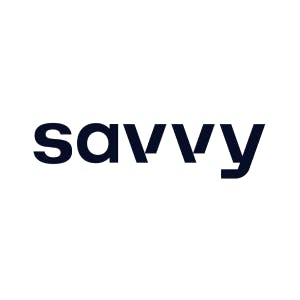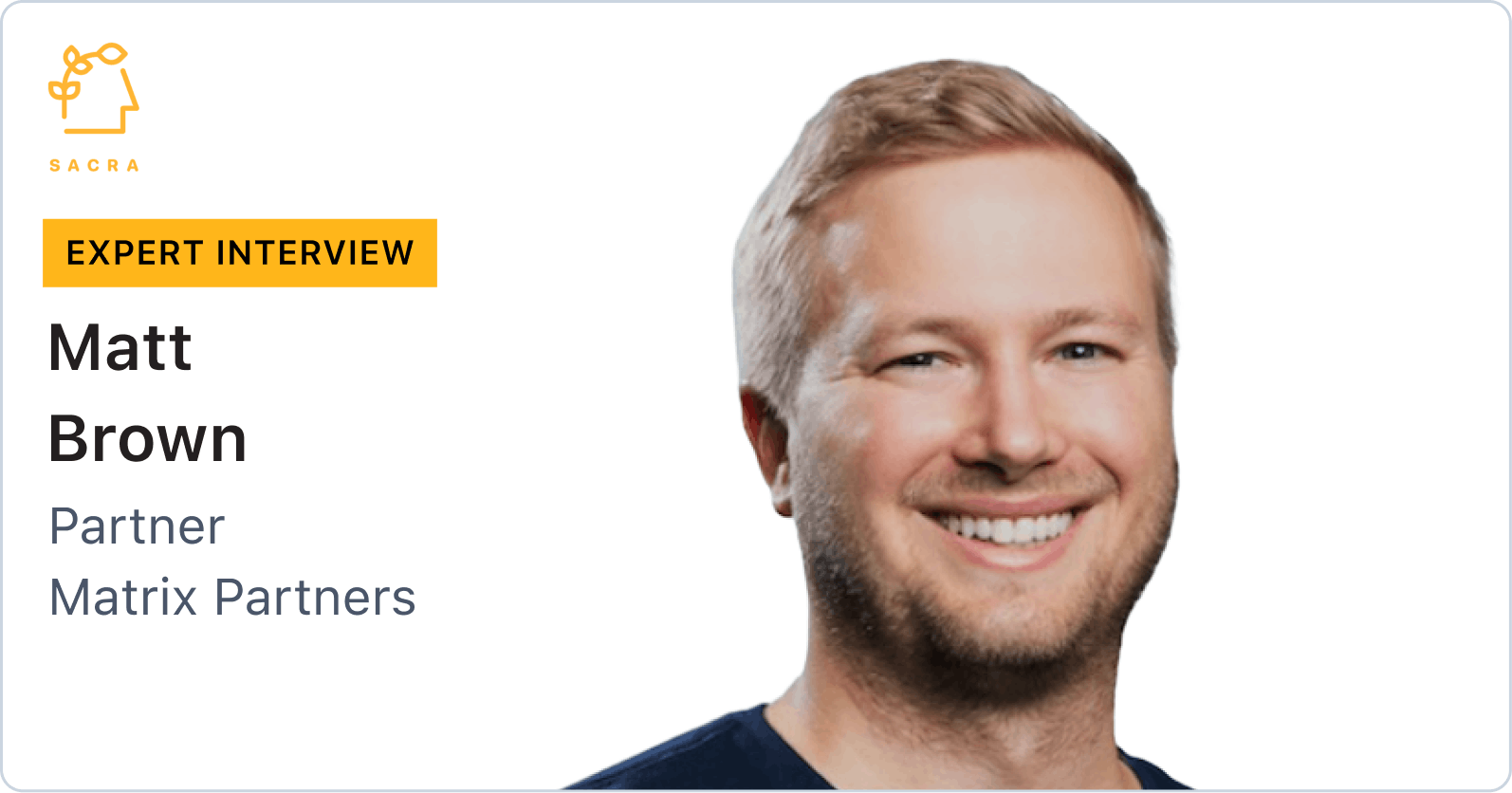
Background
Dave Thornton is the CCO and co-founder of Vested. We talked to Dave because Vested is building at the intersection of two big emerging markets: HNWI wealth management, and startup employee stock option management.
Questions
- Let’s start by talking about Vested and the problem you're solving. What’s the typical customer profile, and what are the core use cases that drive adoption?
- What early signs of product-market fit have you seen at Vested?
- How does Vested make money? Is it a flat fee, or do you take a cut when users exercise or sell via the platform?
- Can you talk about Vested’s corporate structure? How is the company structured versus the fund?
- In a way Vested is like a VC where it has funds and the C corporation is the management company. Is the best way to think of Vested as a product or as a tech-driven VC? How similar or dissimilar is it to AngelList in this regard when you're compounding AUM?
- ROFRs, or rights of first refusal, have historically been one of the major complicating factors in transacting private company shares and stock transfer restrictions. How do you think about ROFRs generally and the risks regarding valuation, companies not wanting them, and using forward contracts to get around them?
- With the current process, is there a 409A impact? Do you see CFOs and CEOs needing to go out and get another valuation, or is this because of the forward contract structure not necessarily printing a valuation on the company's equity?
- Running private markets and secondary sales is a high-touch business. Can you talk about the margin profile for Vested and how you think about the long-term trajectory? How do you think about what can be accomplished with technology?
- What do you think stands in the way of option exercise just becoming a thing that people do? Obviously, there are considerations for employees, like early exercise and 83(b) elections. Why isn't it the base case today that people would use these types of products?
- How do you balance customer acquisition costs with the one-off nature of most stock sale transactions?
- How do you go about underwriting the risks of loans for these types of companies? You mentioned the idea of not picking losers as opposed to trying to hit a home run every time, but what are the ways you look at these companies? How is that different from a traditional lender, say, a First Republic Bank or Silicon Valley Bank, or even larger bulge bracket banks?
- I'm curious if you’ve seen an uptick in down rounds on a macro level. Are there any other macro-level trends you could talk about relative to recent public market volatility sell-offs in the S&P 500?
- Is there any strategy in getting a 409A right now? You mentioned some FMVs creeping backwards. That could actually be a good thing for things like issuing stock.
- Platforms like Nasdaq Private Market and CartaX seem to have made a directional bet on issuer-centric secondary, whereas Forge and Zanbato focus more on solving for investors. Vested appears to be taking an employee-centric approach. What do you think is ultimately the path most likely to succeed here? To what extent are those platforms competitors or potential partners?
- There’s a new wave of products like Pave and Carta Total Comp that are sold to HR and founders to help them decide what appropriate compensation is. How much of that is on the radar for Vested, given that you see so much on the equity comp side?
- When an employee looks at their compensation and determines that it isn't fair relative to the market, what happens then? Do they go renegotiate? Are there resources you provide on how to think through getting trued up, or are you potentially looking at other options outside the company?
- There are a few other companies out there that are helping employees exercise stock options, like Secfi, Quid, EquityBee. How do you think about Vested’s positioning with regard to these companies?
- Platforms like Compound and Savvy are raising money to build founder-centric wealth management programs and platforms. How do you think about Vested’s positioning against those kinds of companies? Is there a potential to compete in the wealth management space as a one-stop shop for financial solutions for employees and founders, or to partner with those types of folks?
- How do you think about future TAM expansion opportunities? Do you see Vested potentially going even earlier-stage or competing for some of the later-stage growth-type companies? Is there a potential for adjacent ancillary business lines in the future, or do you really just want to focus on this one market?
- Could you talk about Vested’s LPs and what that relationship looks like? I’m curious to hear how they think about this investment as an asset class. Do they think of it as indexing across early to mid-stage?
- Many RIAs come from a traditional long-only public equity background and are less familiar with the additional tax and reporting requirements associated with these types of investments. How do you bridge that gap of understanding for the RIA world?
- How should custodians like Fidelity or TD Ameritrade look at Vested in the marketplace?
Interview
Let’s start by talking about Vested and the problem you're solving. What’s the typical customer profile, and what are the core use cases that drive adoption?
Generally, startup employees tend to not make the best use of their equity grants, because they lack a combination of knowledge and capital. We're trying to solve both of those problems.
On the knowledge front, we provide basic tools that help you think about your equity over its lifecycle. For example, we've got a fairness calculator that helps you figure out whether the equity part of your new job offer is market or, alternatively, if there are noneconomic terms that are worth negotiating. We've got an equity dashboard that helps us alert you to things that are going on with your equity that you might care about—for example, an FMV move, a preferred price move, news about your company or news about a competitive company. There's also an equity outcome simulator you can use to make plans for what potential exits mean for you.
On the capital front, we're mostly helping to fund option exercises right now.
What early signs of product-market fit have you seen at Vested?
We occupy an interesting and fairly unfilled niche on the capital side of things, which is where we’ve spent a lot of our time recently. We're helping startup employees that have recently left early and mid-stage companies and need something less than a huge amount of money to exercise. These are essentially folks that nobody else has been offering funding to in the past. The anecdotal product-market fit—and this is from hundreds of deal calls across me and the team—is that there is a ton of gratitude when we're able to help somebody exercise their options they thought were going to go up in smoke. We’ve also noticed that roughly 30% to 50% of our deal volume comes from referrals. And that's without us having explicitly pulled any referral-incentivization levers.
On the more concrete side of product-market fit, our current fund had its last close on November 30th of last year. We're on pace to be fully deployed by early second quarter. As a result, we're already behind in raising a new fund that's going to be about four times the size.
How does Vested make money? Is it a flat fee, or do you take a cut when users exercise or sell via the platform?
The short-term monetization is via the management fee and carry that we generate as fund managers. We may introduce a transactional fee to defray some of the costs related to the various structures that underpin our fund model—for example, spinning up trusts or SPVs.
I expect that, as the world evolves, we'll probably move away from being fund managers at some point in the future and into more of a market-making role, which obviously has a different monetization. But short-term it’s as fund managers.
Can you talk about Vested’s corporate structure? How is the company structured versus the fund?
The Inc. sits on top of a handful of transactional vehicles, all of which are funds right now. Each of those funds has its own GP, which is wholly owned by the Inc.
In a way Vested is like a VC where it has funds and the C corporation is the management company. Is the best way to think of Vested as a product or as a tech-driven VC? How similar or dissimilar is it to AngelList in this regard when you're compounding AUM?
If you're asking from a fund investor's perspective, the financial product that is the fund is like a proto-VC index. It's different than the traditional notion of VC, at least in the sense that we're not trying nearly as hard as a traditional VC to pick winners. We're more avoiding losers and replicating the asset class.
ROFRs, or rights of first refusal, have historically been one of the major complicating factors in transacting private company shares and stock transfer restrictions. How do you think about ROFRs generally and the risks regarding valuation, companies not wanting them, and using forward contracts to get around them?
Over the course of time, we fully expect to work with companies more and more often. And it's not like we don't work with companies and go through the front door ROFR process today. We do. It used to be the case that we would go to the company CFOs and GCs after a forward contract was done and say, “Hey, it would help us feel more comfortable with delivery risk if you could retitle the shares.” For the most part, we're helping ex-employees, which is not a particular disincentivization risk for them. And we're doing very few (and very small) deals per company, which means that, as soon as we tell them about a deal, they have to deal with the potential huge annoyance of, “All right, somebody just priced our shares somewhere. Do we have to redo the 409A process, which would block the legal and equity team for the next week?” So most companies are happy to let us help their ex-employees out.
On the employee side, whenever an employee wants to go through the company, we would love to for reasons that are obvious. But we tend to be dealing with folks who are in their 90-day option expiration window, and they might not find us on day one. They might find us on day 68. If the ROFR period is a 30-day ROFR period, that makes for a lot of uncertainty for them. So the employees tend to want to go the frictionless way, and that's another reason we do forwards. But it's our full expectation we're going to be working with the companies directly as time goes on.
With the current process, is there a 409A impact? Do you see CFOs and CEOs needing to go out and get another valuation, or is this because of the forward contract structure not necessarily printing a valuation on the company's equity?
That’s right. When we used to go to CFOs and GCs after the fact and ask for the share retitlement, they would prefer not to be involved and for this not to be considered a transfer restriction trigger and therefore a right of first refusal type process, specifically because they don't even want to think about the 409A valuation implications.
Running private markets and secondary sales is a high-touch business. Can you talk about the margin profile for Vested and how you think about the long-term trajectory? How do you think about what can be accomplished with technology?
We've done a good job so far automating a substantial amount of the transactional process, inclusive of the education that usually happens at the front end of the transactional process. We're going to continue to pour in efforts on automating as much of the remaining parts of the transactional process as possible. We're doing a decent job and are already fairly well-scaled. We're helping option-holders from up to 10,000 companies, and we feel comfortable about that.
As we scale and build a brand, we believe that trust is going to end up doing a meaningful amount of work on the high-touchness—meaning somebody who might have needed to talk to us for 20 minutes before will only talk to us for five minutes or, for somebody who had five minutes worth of questions, we'll just do the entire process in an automated way. We also believe pretty strongly that we're riding an active trend toward options funding just being “a thing people do.” That also will help to build trust, since this will be an understood transaction and not that big a deal. We won’t need to spend too much time with every counterparty, and they won't want to spend too much time with us.
What do you think stands in the way of option exercise just becoming a thing that people do? Obviously, there are considerations for employees, like early exercise and 83(b) elections. Why isn't it the base case today that people would use these types of products?
It's a couple of things. I think one is that there's a significant lack of education on the part of startup option holders. Sometimes they think they have shares, but they have options. Other times, it's hard for them to really think about the tax consequences of doing something now versus later.
Parallel to that, I think there is an issue around pricing. For you to exercise options today—which is a risky thing to do and also creates tax implications—you need to make sure that the pricing of the entire transaction makes sense relative to, for example, the difference between long and short-term capital gains that you're hoping to accelerate by exercising today. As the market matures and there are more folks doing the types of things that we're doing, the pricing will also get better. And I think it will probably meet the education component at some point in the future.
How do you balance customer acquisition costs with the one-off nature of most stock sale transactions?
This echoes my prior comment about how much we've automated. We've done a significant amount of systems building and technical support around not just deal flow but also customer acquisition in the first place. So if the question is how we balance it, we don't really. We reach out to all the folks who we think might actually need our help, which are the folks who have recently left the early and mid-stage companies that we know grant options and probably have a 90-day post-termination window. Our web application does a decent job educating them on what specifically we're doing and helping them structure a transaction. It's really not quite as bespoke for us as the question implies.
For the most part, when we're talking to folks, we're talking to them about contract questions and a little bit just to present a human face on the other side of their financing transaction, so they know we're people who can be dealt with and trusted. But we're not talking about two or three hours of human interaction for every deal we do.
How do you go about underwriting the risks of loans for these types of companies? You mentioned the idea of not picking losers as opposed to trying to hit a home run every time, but what are the ways you look at these companies? How is that different from a traditional lender, say, a First Republic Bank or Silicon Valley Bank, or even larger bulge bracket banks?
I'm willing to be educated on the way the rest of the market works because it's constantly evolving, but I do believe that pretty much everybody else that does this type of underwriting is doing very traditional underwriting. They're trying as hard as they can to understand the finances of the company and get in touch with the CFO or the VP of Finance to see revenue and EBITDA.
We're outside investors, and it's very difficult for us to get access to that type of data across many companies, so we do it in a completely different way. One is we're piggybacking on the VCs that have already done their work. So we're only supporting the option-holders of in VC-backed companies. Obviously, if a company has raised a round recently, there is typically a credible VC that has done a bunch of the underwriting you're talking about.
After that, we look for very high-level signals that a company is not doing particularly well. Like I said, our goal is not to pick winners but rather to avoid the companies that are clearly going to zero in the next bit—so, major recent down rounds, massive investor attrition in the most recent round, the types of financing terms that suggest a company might not have enough market power to get “market” financing terms. But that still leaves a very large group of companies for us to potentially serve, which is the intention.
We also pay a decent amount of attention to whether everybody from this company that could potentially come to us is coming to us and trying to sell all their shares. So there's a little bit of a signal in our own customer behavior as it relates to some of these companies that's helpful as well. For the most part, the rest of the work on the fund is done by a combination of diversification, which we have in spades, and also price.
I'm curious if you’ve seen an uptick in down rounds on a macro level. Are there any other macro-level trends you could talk about relative to recent public market volatility sell-offs in the S&P 500?
First of all, it's obvious there's been a ton of selling off in the public markets right now, and that selling off is going to trickle down to the VC market in different ways. One obvious trickle down is that later stage companies are slowing down IPO activity a little bit, as well as SPAC activity. We're seeing FMVs move a little bit in the negative direction as the more proactive companies are getting ahead of the fact that the market's not what it once was. We're not seeing a ton of down rounds yet. Although inflation has already gone up, interest rates are about to rise. We'll see what happens there.
I will say the effects are progressively more muted the farther upstream you go in company stage. So if a bunch of Series H companies just got had their valuations significantly reduced, the Series G companies are going to be hurt a little bit less. When you get all the way up to Series A companies, I haven't seen much of an effect.
Is there any strategy in getting a 409A right now? You mentioned some FMVs creeping backwards. That could actually be a good thing for things like issuing stock.
We haven't seen this at enough scale to make a categorical comment, but we did see a whole bunch of FMV revaluations in the first year of COVID. For the most part, it was for retention. It was a way to say, "We may not have as much cash as we used to, or we may not be able to find as much cheap money as we used to, so cash compensation at this company is not going to go up, but at least we can do the following favor, which is issue slightly lower priced stock options to everybody to keep them around." I wouldn't be surprised if you saw some of that, although it really depends on how long the downturn lasts. If the downturn turns out to be a blip, then probably not.
Platforms like Nasdaq Private Market and CartaX seem to have made a directional bet on issuer-centric secondary, whereas Forge and Zanbato focus more on solving for investors. Vested appears to be taking an employee-centric approach. What do you think is ultimately the path most likely to succeed here? To what extent are those platforms competitors or potential partners?
It's hard to know which approach is going to win. If you put a gun to my head and made me pick one, I do think the investor-centric approach is maybe a little bit behind the employee and the company-centric approaches, mostly because VC is a great performing asset class. There's been trillions of dollars trying to make its way into the VC asset class for a while.
As between the employee and the company-centric approaches, I think you can make an argument both ways. At the end of the day, you need to be working with and through companies in order to get full distribution. However, that's a very B2B sales process, and companies don't always have the infrastructure to put a liquidity program together. It's not their first priority. In the short term, on the way toward a fully baked liquidity program you can hand off to an early or mid-stage company, I think working with employees is a pretty good approach because it allows us to scale quickly.
That said, I think we're all going to exist as partners for quite a while. One of the biggest reasons is that, for as long as Carta, Forge, EquityZen and Nasdaq Private Market are serving the companies—or at least being extremely deferential to the companies—as one of their primary constituencies, there are going to be certain things they can't do. Some companies may not be ready to help all their employees at the scale that anybody would like. So we're a clear partner for them, because we can be at arm's length and help the people they're trying to help, but without causing them to bite the hand that feeds them.
There’s a new wave of products like Pave and Carta Total Comp that are sold to HR and founders to help them decide what appropriate compensation is. How much of that is on the radar for Vested, given that you see so much on the equity comp side?
We would like to be a partner and a data contributor to the companies that are doing more holistic life planning and wealth management. We don't necessarily see the cash comp part of offers, so I don't expect us to ever get too far into that. But for everybody who comes to us with their option grants, we do have a sense, implicitly, of what their equity comp was. And for people who decide to put their options or potential option grants through our fairness calculator, we have a sense of what their equity comp is. We would like to bring transparency in the ways that we can to this issue.
When an employee looks at their compensation and determines that it isn't fair relative to the market, what happens then? Do they go renegotiate? Are there resources you provide on how to think through getting trued up, or are you potentially looking at other options outside the company?
At the end of the day, it's a risk decision a potential employee needs to make about how they want to negotiate their offer. If they’re negotiating their offer, I would say it's still better to have some information rather than none. It's reasonable to have a follow-up conversation, where you bring data to the conversation and say, “I believe this offer might be a little bit low relative to the market,” or “I've heard that this particular term is actually quite valuable and reasonable for you to provide,” and then see if the company bites. After that, they can decide based on the company’s reaction—and especially if it's a negative reaction—whether they want to take the risk of pushing further.
There are a few other companies out there that are helping employees exercise stock options, like Secfi, Quid, EquityBee. How do you think about Vested’s positioning with regard to these companies?
We're occupying a white space that either expressly or practically neither of those categories of companies really live in. Secfi and Quid, as an example, do pretty deep outside due diligence, which is an analyst-heavy endeavor. Once they decide they like a company, they try to justify all the work they put into understanding it by making sure they get the maximum amount of exposure to that company. As a result, they tend to focus on the later-stage companies about which there's enough public information to do diligence in the first place. They tend to also focus on bigger deals.
We focus more on early and mid-stage and on smaller deals. So there's complementarity there. We actually have referral relationships with some of the companies you mentioned, where we will send big deals to them and they will send small or earlier-stage deals to us.
EquityBee looks a little bit different, but it has some of the same symbiosis. Although they're a marketplace and anybody can list their options funding deal from any stage company and for any amount, the buyers in the market tend to want to know enough about the option-issuing company to feel comfortable supporting a deal. As a result, they tend to have more deals that get done on the later-stage side. A lot of earlier-stage deals may get listed on EquityBee but not filled, and then we'll catch them. We don't really butt up in a competitive way against these names that you're mentioning too often.
Platforms like Compound and Savvy are raising money to build founder-centric wealth management programs and platforms. How do you think about Vested’s positioning against those kinds of companies? Is there a potential to compete in the wealth management space as a one-stop shop for financial solutions for employees and founders, or to partner with those types of folks?
I think much more likely partner. If you think about our market in concentric circles, the smallest ring that we're in right now is helping ex-employees fund their options on their way out the door. There is a substantial amount of growth just one ring out, which is helping current employees fund their options. Then another ring out, maybe one day getting to the founder part of the capital stack or even further out, the preferred part of the capital stack. There's plenty of runway within the smallest ring as is. As we expand, it's probably not going to be horizontally. It'll probably be vertically within the capital stack.
So we view wealth management firms as a great partner. We're not likely to get into wealth management, though all of our customers who have liquidity events will need wealth management. My sense is we should be symbiotically referring to each other at the appropriate time. When we have a customer who's having a liquidity event, they're going to need a referral to wealth management. When somebody helps a wealth management customer look at a new job or think about whether they should go find option exercise funding, they can think of us.
How do you think about future TAM expansion opportunities? Do you see Vested potentially going even earlier-stage or competing for some of the later-stage growth-type companies? Is there a potential for adjacent ancillary business lines in the future, or do you really just want to focus on this one market?
There is so much runway within this market that focusing on this market and not getting into adjacencies where we don't have deep subject-matter expertise is probably the smartest way to expand for a while.
Depending on who you want to quote, 50% to 80% of options go up in smoke at the end of the 90-day post-termination exercise window. That's tens of billions of dollars by itself per year alone. There are ten times more current employees than there are ex-employees. Then you've got the founder and the preferred part of the stack. My sense is we've got years and years of hypergrowth-level runway just within the cap stack itself. We shouldn't be thinking too hard about adjacencies that would require a learning curve until our current growth rates slow down.
Could you talk about Vested’s LPs and what that relationship looks like? I’m curious to hear how they think about this investment as an asset class. Do they think of it as indexing across early to mid-stage?
For the most part, they are buying into the proto-VC index that they know will become a more refined version of an index over time. It's interesting: there's been a trend away from financial advisors that work within banks and broker-dealers to slightly more independent registered investment advisors. Historically, registered investment advisors have not had the easiest access to VC. Our goal over the next stretch of time is to make sure that registered investment advisors and the capital they control get access to VC without having to go through the front door and wait.
From the perspective of that class of investor capital, access to VC is the primary thing we're selling, and it’s in a differentiated, diversified, relatively reasonable cost way that makes them feel comfortable about accessing it, not on a single name basis.
Many RIAs come from a traditional long-only public equity background and are less familiar with the additional tax and reporting requirements associated with these types of investments. How do you bridge that gap of understanding for the RIA world?
I imagine for the most part that the names you just mentioned will be partners on this journey of expanding access to the asset class. They're figuring out the feeder fund structure that'll allow us to get quickly and easily and in a trustworthy way in front of a bunch of RIAs—at least the RIAs that are on the platform and know what to look for. I think the answer, generally, is to be on the custodians and have a track record. Getting on the custodians is something we're going to be doing imminently. Generating the track record that will allow us to pop up multiple funds on the custodians and, eventually, on aggregator sites like iCapital.
How should custodians like Fidelity or TD Ameritrade look at Vested in the marketplace?
Probably as an interesting and much safer alternative way to get into the VC asset class for a number of their clients.
Disclaimers
This transcript is for information purposes only and does not constitute advice of any type or trade recommendation and should not form the basis of any investment decision. Sacra accepts no liability for the transcript or for any errors, omissions or inaccuracies in respect of it. The views of the experts expressed in the transcript are those of the experts and they are not endorsed by, nor do they represent the opinion of Sacra. Sacra reserves all copyright, intellectual property rights in the transcript. Any modification, copying, displaying, distributing, transmitting, publishing, licensing, creating derivative works from, or selling any transcript is strictly prohibited.

 Conor Gleeson
Conor Gleeson













